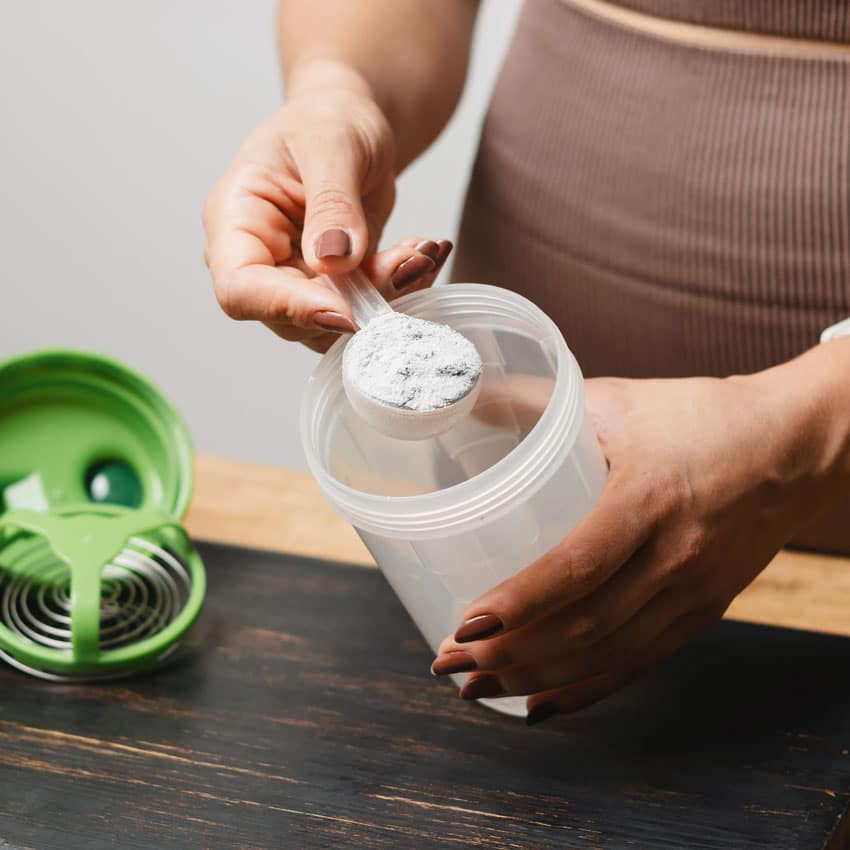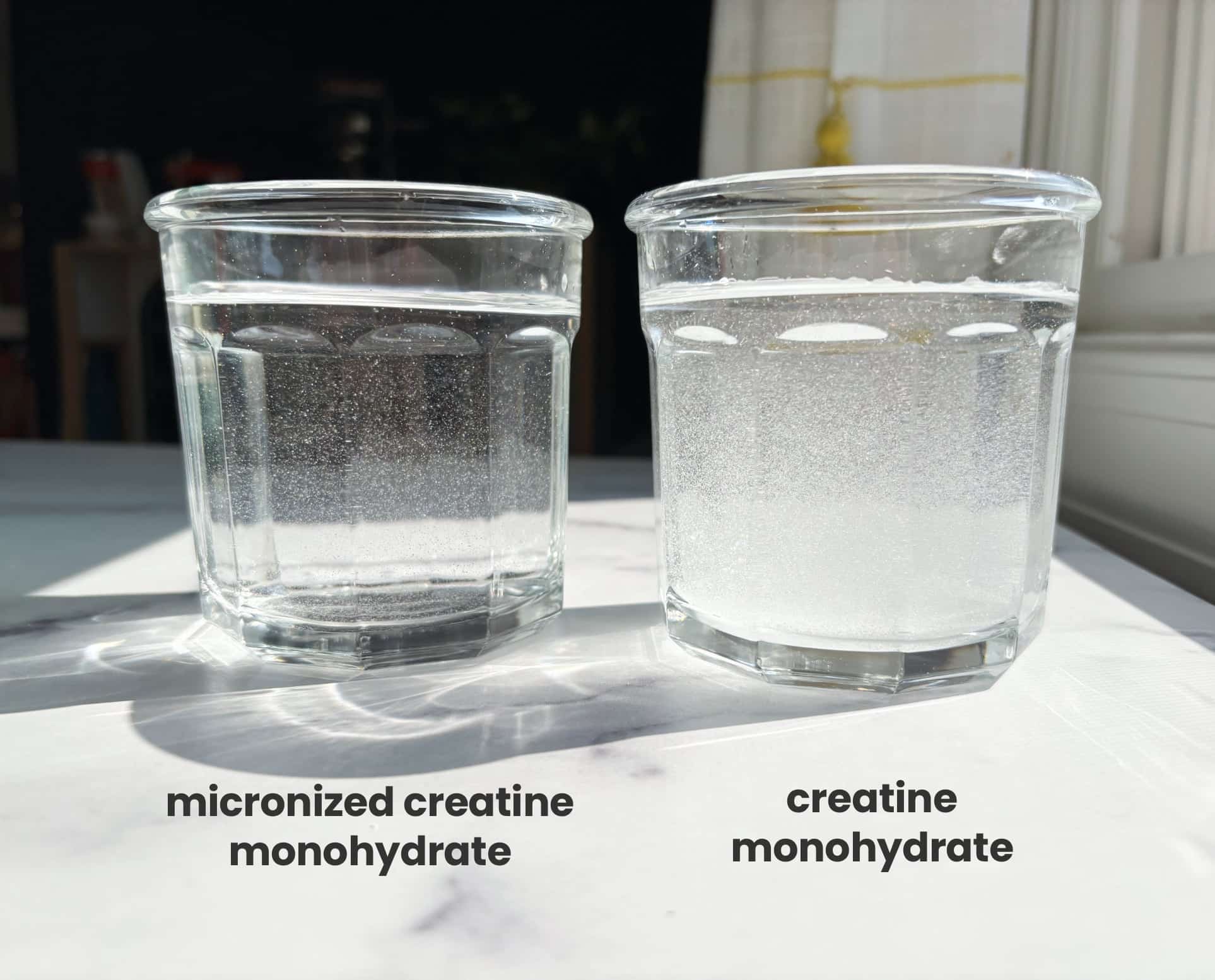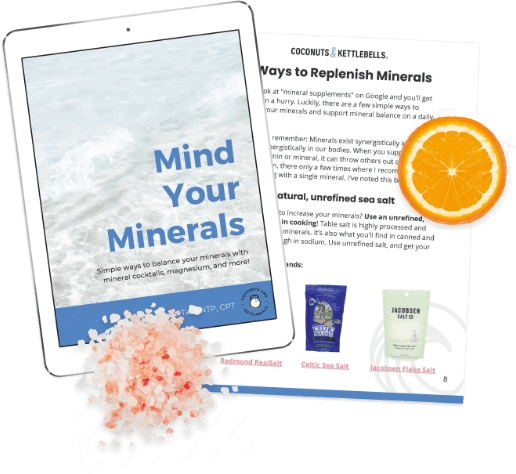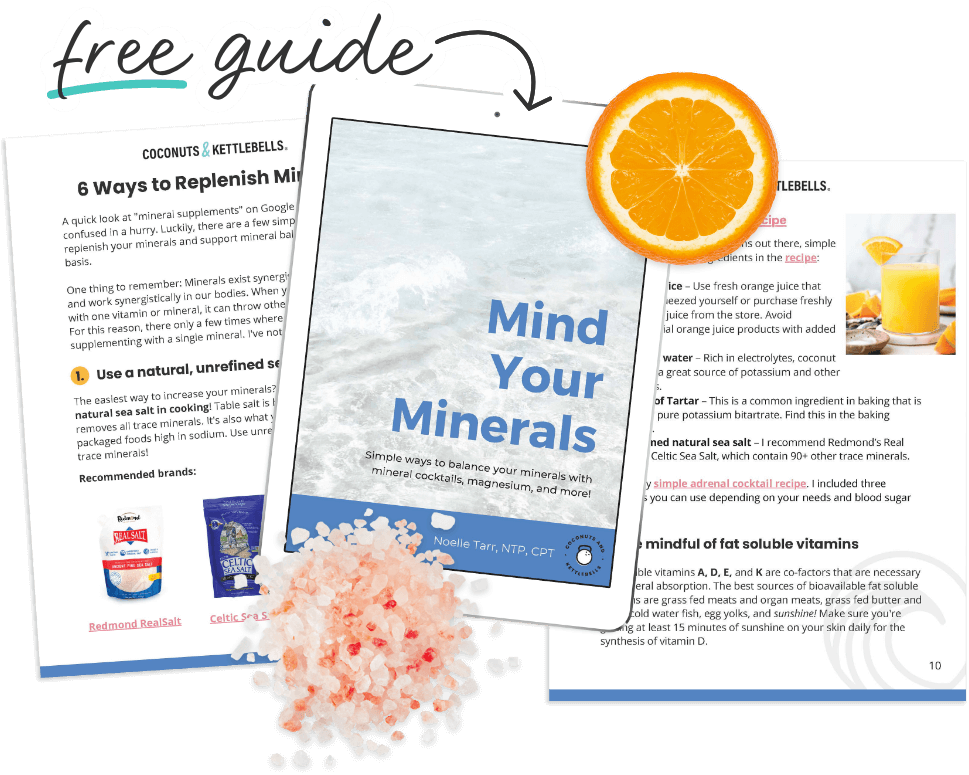Curious about the difference between creatine monohydrate vs micronized creatine? Here’s exactly how to figure out which type is right for you.
Chances are, you’ve heard a lot about creatine lately. While previously associated with gym bros, new research shows creatine can support muscular strength, exercise performance, recovery, mood, and cognitive function in people of all ages. In fact, it’s been shown to be incredibly beneficial for women both in and out of the gym.
Because creatine is one of the most well-researched and effective supplements on the market, many people have started taking it. But, how do you know which type is right for you? Here’s everything you need to know about creatine supplementation, and the difference between creatine monohydrate vs micronized creatine.
What is creatine?
Creatine is a naturally occurring compound made in the body from three amino acids—arginine, glycine, and methionine. Although it’s mainly stored in muscle cells, it also plays a role in brain function.
The body utilizes creatine to produce adenosine triphosphate (ATP), the primary source of energy for cellular functions. When ATP is depleted during activity, creatine steps in and helps ATP regenerate faster. This helps improve exercise performance and strength, and supports recovery. In other words, creatine helps you work harder and faster for longer.
What does creatine do?
When your cells are fully saturated with creatine, the body has better access to ATP. Whether you’re looking to improve exercise performance, enhance cognitive function, or support longevity, here’s what the research shows:
- Improves muscle strength and endurance: Creatine is a game-changer for people who are active—it helps build muscle and strength and improves exercise performance.
- Support recovery: Creatine supports recovery by reducing the level of exercise-induced muscle damage.
- Improves lean body mass: Studies show creatine can increase lean body mass when combined with resistance training.
- Enhances cognitive function: Creatine may enhance cognitive function, memory, and keep mental fatigue at bay in older adults, specifically when creatine stores decline.
- Reduces age-related muscle loss: New research shows creatine may reduce age-related muscle loss and bone density without resistance training.
- Improves Mood and Reduces Fatigue: After sleep deprivation, creatine may help improve mood and reduce symptoms of fatigue.

Is creatine found in food?
Yes! Creatine is naturally found in foods we eat, specifically animal products. Creatine is mostly found in red meat, fish, and chicken, with smaller amounts present in dairy products. Plant-based foods do not contain creatine, which is why vegetarians and vegans tend to have lower creatine levels.
Even if you eat meat daily, it typically provides about 1-2 grams of creatine per pound. Creatine supplementation tends to make it much easier and more practical to get the recommended 3-5 grams per day.
What is creatine monohydrate?
While there are many different types of creatine, creatine monohydrate is the most extensively studied and clinically effective form of creatine. It has a proven track record of safety and performance. Because it’s been researched and used for decades, it’s cost effective and widely available.
Creatine monohydrate consists of a creatine molecule bonded with one water molecule—hence the name monohydrate. Creatine in its natural form is less stable and soluble. Adding a water molecule improves both the stability and solubility, making it easier to mix and absorb.
Difference between creatine monohydrate vs micronized
The main difference between creatine monohydrate and micronized creatine monohydrate is particle size and solubility. Both creatine monohydrate and micronized creatine are the exact same type of creatine, but micronized creatine has been broken down into a smaller particle size. Here are the key differences:
Creatine Monohydrate
- Standard form of creatine
- Well-researched and highly effective
- Can be slightly grainy and may not dissolve completely in water
Micronized Creatine Monohydrate
- Same creatine monohydrate but broken down into a smaller particle size (micronized)
- Better solubility and dissolves more easily in water
- May cause less bloating and digestive issues for some people due to improved absorption

Which should you take?
Creatine monohydrate and micronized creatine are well research and highly effective. There are little to no downsides associated with supplementation. Both forms provide the same benefits and can help support muscle strength, lean body mass, exercise performance, and cognitive function.
If you struggle with digestive issues or bloating, try micronized creatine monohydrate. When creatine monohydrate is micronized, it’s broken down into a smaller particle size to improve absorption and reduce digestive distress.
While creatine monohydrate can sometimes have the texture of sand water, micronized creatine monohydrate dissolves completely, leaving no undissolved particles at the bottom of your glass.
Is creatine right for you?
If you’re looking to improve lean body mass, exercise performance, or recovery, creatine is an easy add to your routine. While it supports a variety of goals, creatine is particularly helpful for people who are active. If you want to maximize your workouts—creatine is a no brainer!
Creatine is not just for athletes, it’s also beneficial for people who don’t workout. It’s been shown to reduce age-related muscle loss, improve fatigue, and enhance cognitive function without resistance training. It’s also great for daily activity like walking and climbing stairs, as it helps support recovery and injury prevention.
The best way to move forward? Start with 3-5 grams of micronized creatine monohydrate daily, and see how your body responds!



0 Comments